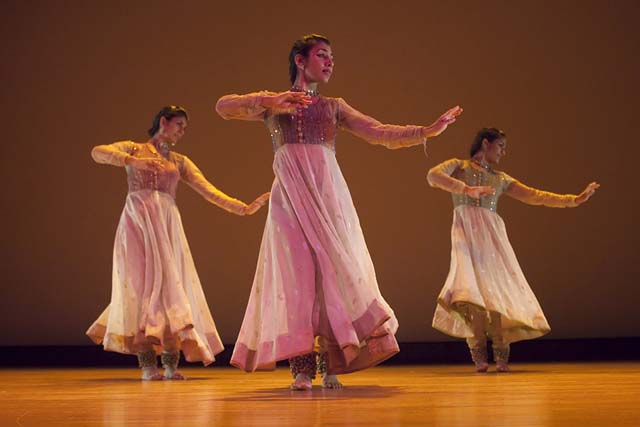
Erasing Borders: Festival of Indian Dance
Lord Shiva danced the world into existence with a shake of his mighty damru, it is said, and we’ve been dancing ever since.
Indian dance is a vital, organic entity – it jumps off the walls of ancient temples to villages, towns and cities across India and the Diaspora. Indians aspire to dance, be it grandmas doing the Garba or kids belting out Bollywood numbers in front of the TV. And then you have the dance professionals who take it to a whole breath-taking level.
You had to be at ‘Erasing Borders: Festival of Indian Dance’, a three day festival of dance in NYC to see how boldly the ghungroo bells ring and how feet and hands and bodies meld into a thing of beauty. What was eye-opening was the sheer diversity of the dance vocabulary and how it’s being interpreted by a whole new generation of dancers.
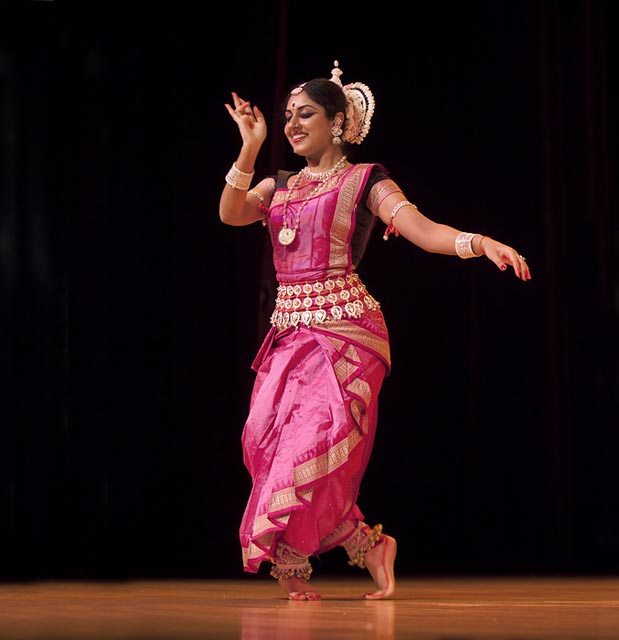
Shipra Mehrotra
The festival organized by Indo-American Arts Council and Asia Society included concerts, panels and workshops and even a kutcheri Mefil or Cushion Concert. Aroon Shivdasani, director of IAAC, and Rachel Cooper, Director for the performing arts at Asia Society, were the people behind the festival along with co-curators Rajika Puri and Uttara Coorlawala, and Prachi Dalal, the hardworking festival director, co-curator and lightning rod who made things happen.
There were noted dancers from India and the US, and what really stood out was the innovative work being done on both continents. As the dancers move across borders, dance is continuously taking on new variations and reinventing itself.
As the co-curators noted, “Borders are continually being erased and rebuilt – borders between traditional and contemporary, classical and folk, vernacular and high art, India and Indian Diaspora, dance and dance-theater, borders between nrtta or works that focus on movement and rhythm, and nrtya or dances that narrate, borders between us and them, borders between borders.”
The interconnections and the interactions between home and the world are indeed creating new dance stories, new styles, and even embracing what would traditionally have been thought of as ‘low art.’ Thus you had high art – classical Bharat Natyam by that noted master Navtej Johar from India celebrating Meenakshi the Goddess in a marathon, magnetic performance, his interpretation of 18th century Tamil composer-lyricist Sri Mutthuswamy Dikshitar’s tribute to the Goddess.
And in the same program you had a high-energy, very in-your-face Bollywood bash with the 11 male members of the dance group Wanted Ashiqz, in shining gold outfits, dancing everything from Govinda to Michael Jackson. This was the first time I was seeing something like this in the hallowed auditorium of Asia Society and it made one realize that Bollywood is finally getting some respect, and being accepted as legitimate Indian dance.
For years Indian parents in the Diaspora have been exposing their children to classical and folk dance through dance classes, contests and the grand pinnacle – the arangetram. Imbibing all this, this generation of Indian-Americans is bringing its own touch of new to the old, as they are part of mainstream American traditions too.
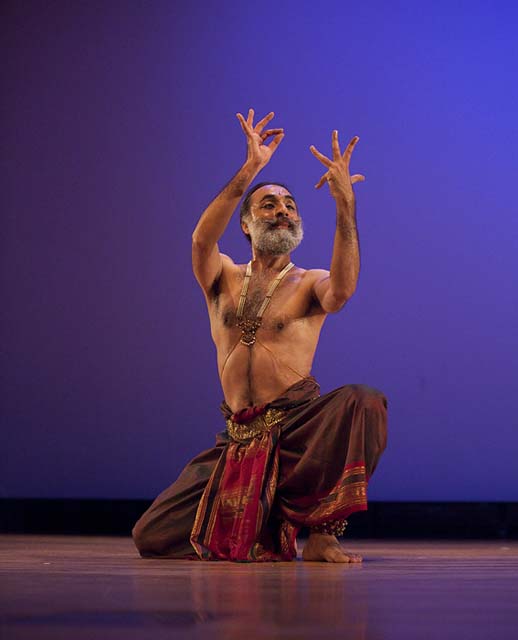
Navtej Johar
Shipra Mehrotra, who started studying Odissi 21 years ago at Nrityalaya in Washington DC, has learned from renowned guru Padmashree Gangadhar Pradhan and noted dancer Aruna Mohanty at the Orissa Dance Academy. This evening, resplendent in shocking pink, she brought her guru’s innovations to classic Odissi. In this piece Radha would have traditionally been interpreted as sad and depressed, imagining Krishna with another woman.
Yet here, as Mehrotra explained, “she’s not imagining that Krishna is with another woman, she’s gone beyond that – she is living it because she wants to, she is living vicariously through this other woman. She wants to be there, making love to Krishna. So she’s gone beyond the sad, dejected nayaka –she’s added the ecstasy, the passion, the spiritual joy that comes through being with her lover, even if it may be through another woman.”
In the same vein, you have Parul Shah, who grew up in New York and brings her own distinct bold contemporary flair to Kathak and to the choreography of The Parul Shah Dance Company – adding a modern stylishness to this dance of the royal courts.
As Parul Shah and her dancers spun around, their floating skirts whirring around them, you got goose bumps seeing a dance you’ve known since childhood but now with an added attitude, a 21st century touch. In this continuing east-west dialogue, The Parul Shah Dance Company, comprising of Parul, Reena Shah and Ammr Vandal, has performed at mainstream venues like Jacob’s Pillow, Fall for Dance at City Center, Lincoln Center, and Summer Stage. As Shah says, “Things happen in a very holistic way and it’s based more on intuition rather than intellect.”
One also got to see firsthand the impact of classical Kathak dance on American post modern dance in the surprising encounters in the work of California based Cynthia Lee. Ruddha (Rude, huh?) “is a series of ‘false translations’ of traditional Kathak compositions, where North Indian rhythmic syllables transform into nonsensical English gossip, and idiosyncratic postmodern movement suddenly shifts into classical Kathak.”
When the two are juxtaposed, for the audience there is at first discomfort, confusion, self-conscious laughter and then pure enjoyment as Lee’s edgy performance unfolded, revealing the interplay of cultures.
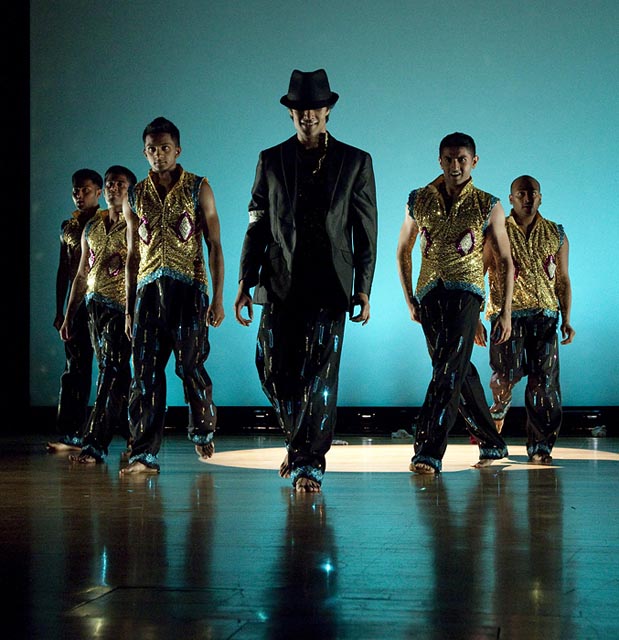
Wanted Ashiqz
Lee is a member of the Post Natyam Collective and her teachers have included an eclectic bunch – Simone Forti, Eiko & Koma, Judy Mitoma, Kumudini Lakhia, Bandana Sen, and Anjani Ambegaokar. As she says, “My work emerges from creating dialogues between different worlds probably partially because I’m the child of Taiwanese immigrants, my whole life I Don’t belong here, don’t belong there– so I just make my own world. Sometimes the parts argue with each other and are in contradiction and so that comes out in my choreography as well which is the only thing I can control what happens creatively.”
Another interesting aspect is that though different forms of dance may belong to different regions of India – they are fast becoming pan-Indian – you don’t have to be North Indian to do Kathak or South Indian to do Bharat Natyam. Navtej Johar, the Bharat Natyam dancer, is a Sikh from the Punjab. And as Shipra Mehrotra, the Oddisi dancer who now lives in Texas, said, “I’m from Uttar Pradesh – I’m North Indian and I do Oddissi, which is from the eastern part of India. I’d like to say that passion for something doesn’t stem from your heritage or your ancestry – it just stems from you, from within yourself and your soul.”
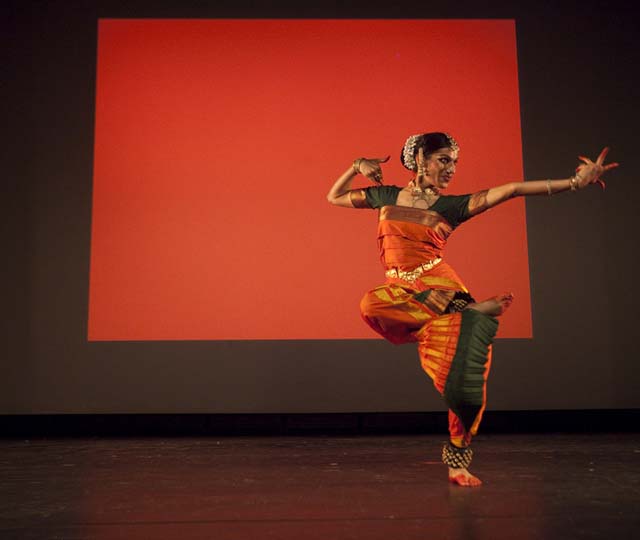
Mesma Belsare
We got to see more of this passion in the panels and workshops where some heavyweight talent had been gathered to explore the anatomy of dance. The experts included Anita Ratnam who is a neo-classical and contemporary dancer who founded Narthaki.com, an Indian dance portal and also co-founded The Other Festival, India’s annual contemporary dance festival; Richard Schechner, Professor of Performance Studies at Tisch School of the Arts, NYU, an author, founder of The Performance Group and a director of plays in Hindi, English and Mandarin; and Uttara Asha Coorlawala, a Ph.D from New York University who has been teaching in dance programs at Barnard College (Columbia University), Alvin Ailey-Fordham University, and at Princeton.
One of the highlights of the three day festival was the Kutcheri Mehfil or Cushion Conversations, informal performances where the audience is a heartbeat away from the dancers as they improvise. These dancers included Anuradha Nehru and Ramya Ramnarayan, Prerana Deshpande and Rachna Narang. Later they were joined by Navtej Johar, and they all showed how wonderful the abhinaya experience could be.
In salons such as this, audience and dancers each invigorate the other – the applause and the performance merge and became one. As Prachi Dalal noted, “It’s a two way dialogue and without your response this magic could not have happened.”
Later at an after-party at IAAC director Aroon Shivdasani’s home there were some off-the-cuff mehfils and a chat with Rajika Puri, co-curator and herself a noted dancer, choreographer and actor. Having spent many years in the US she was able to look with a clear eye at how far Indian dance had come in America.
Known for her danced story-telling with chants from Sanskrit and text in English for mainstream audiences, she saw the change largely in how many more people were discovering the magic of Indian dance, especially young Indian-Americans finding their roots.
These second generation Indian-Americans were all bringing an edge to traditional dance, an American professionalism, having grown up here. Mythili Prakash from Los Angeles, is a leading exponent of Bharat Natyam, bringing an innovative approach to classical dance, having trained in the Thanjavur tradition with her mother, the noted dancer Viji Prakash.
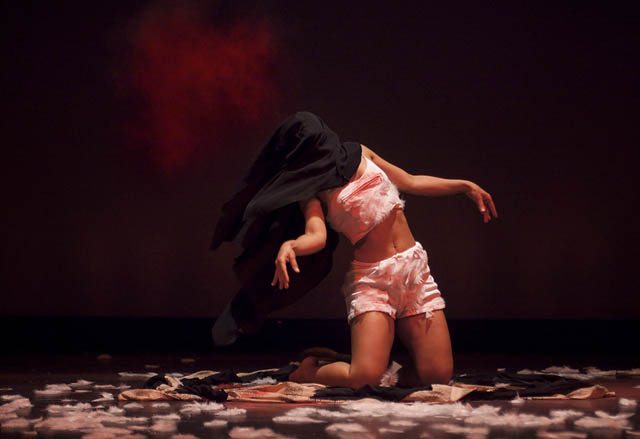
Sheetal Gandhi
There’s Sheetal Gandhi from California, who merges her Indian and American experiences, having worked as a performer in Cirque du Soleil’s ‘Dralion’ and played a leading role in Broadway’s ‘Bombay Dreams’, besides her own choreography in inventive performances, such as Bahu-Beti-Biwi at this festival. Then there’s Mesma Belsare whose stage presence can be described in one word – mesmerizing. This Boston-based dancer, choreographer, and art-museum educator has received rave reviews and brings a real edge to traditional dance.
“These are thinking people, they are coming out of universities and interesting workshops,” says Rajika Puri. “This is all happening here – this is the country which makes it possible. Indian dance is about the mind.” As she points out great composers like Philip Glass and dancers like Mark Morris have been inspired by India, and Indian artistes in turn are inspired by things which are western. There’s a cultural dissemination where people can choose and see things which are brilliant and good and make whatever work they’re doing better.
The borders are certainly being erased, and it’s possible now to go global without even crossing borders, as cultures infiltrate the airspace and cyberspace. “There is this lovely interplay between ‘I’m my real reality and traditional authentic but excuse me – I have my walkman, my cell phone, I can speak with an American accent and I can do the moonwalk’,” says Puri with wry humor. “It doesn’t even have to fuse – our worlds are so open because of communications, because of the Internet, because of what we see. You don’t even have to be global; you just have to be good.”
(C) Lavina Melwani
Photo Credit: www.michaeltoolan.com
This 2008 video captures beautifully the spirit of the Erasing Borders Festival which grows in strength every year.

2 Comments
Uttara, thanks for your thoughtful comments. Yes, it’s true – in this age of online news, the prevailing wisdom is that to be read at all, blog posts must be short, to the point, preferably with bullet points! However, there are some pieces – like this one about the dance festival – that need to be mulled over, stretched out, in a sense taking the reader with you into the dance space.
I do like the way cultures have infiltrated the airspace and cyberspace – it allows performers more freedom to do what they want, and of course there is always a place for rituals and tradition.
I think you have made a very important point about the way that “cultures infiltrate the airspace and cyberspace” This really changes the expectation that each performer–wherever he or she may be dancing–MUST be a flag bearer for that particular genre, art form and culture.
I feel that (as curators) we really want to break down monolithic expectations of any kind, as these pressure performers into categories and also restrict the way that people see.
We need to resist the comparable tendency of consumers of cybercultures that reduce performers and performance events to image and fast bytes. (Is that the correct cyber usage?)
Thanks for covering the entire festival as a continuous experience , and for resisting the pressure to reduce many offerings into ghostly traces of themselves….
Ha! Dancers are so used to being walked over, (perhaps body and time have something to do with this) that we say thanks for anything.
But I mean it, thanks very much. It makes us all feel more supported, more bonded with the larger communities and our own specialized ones.
Uttara